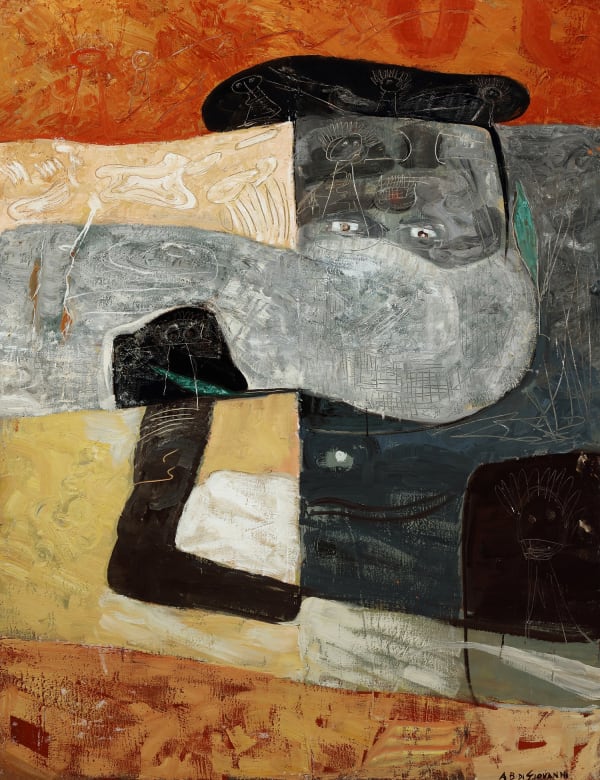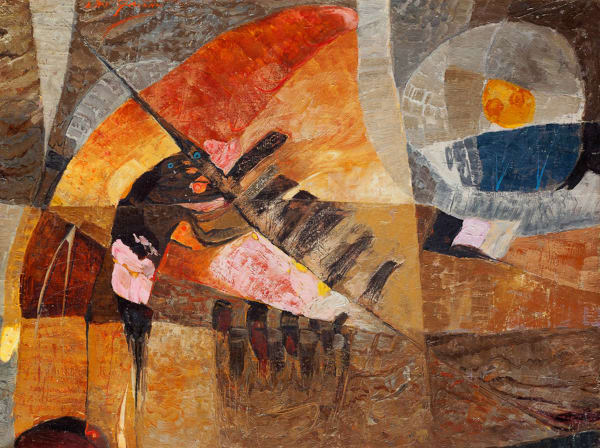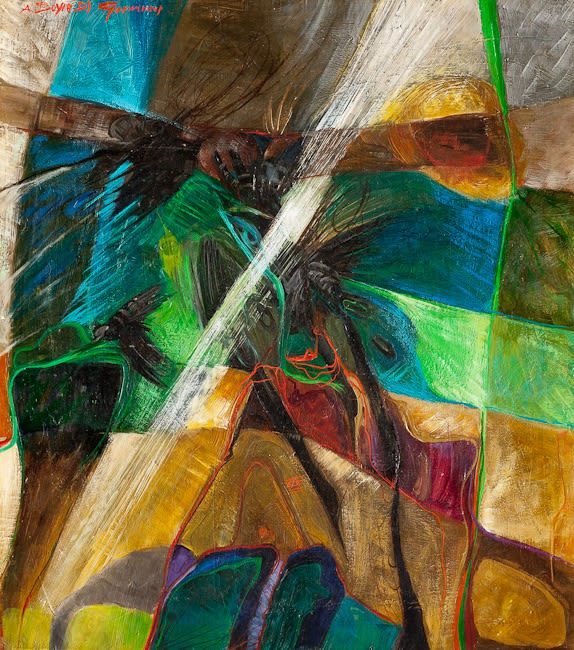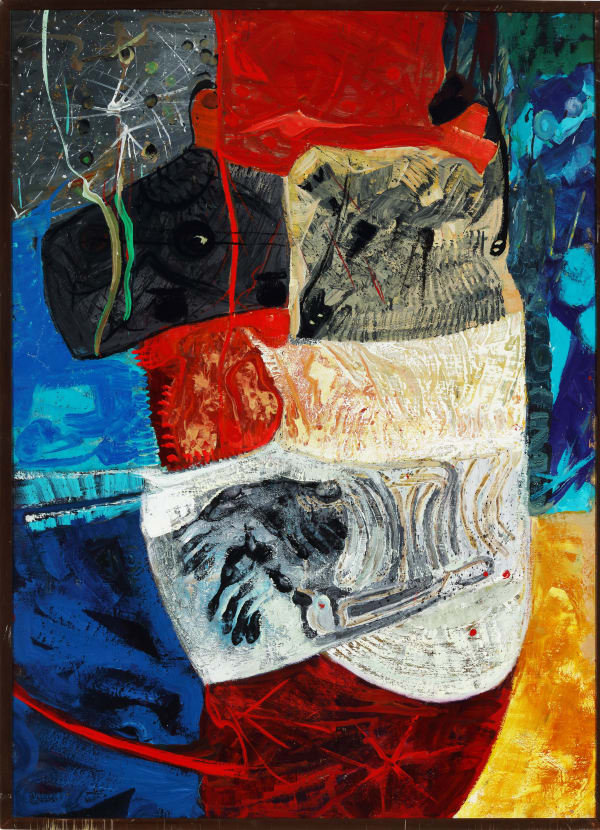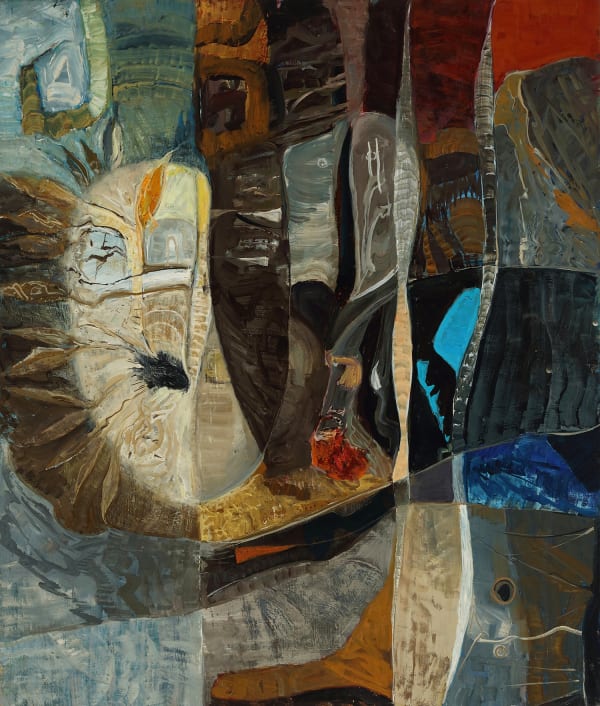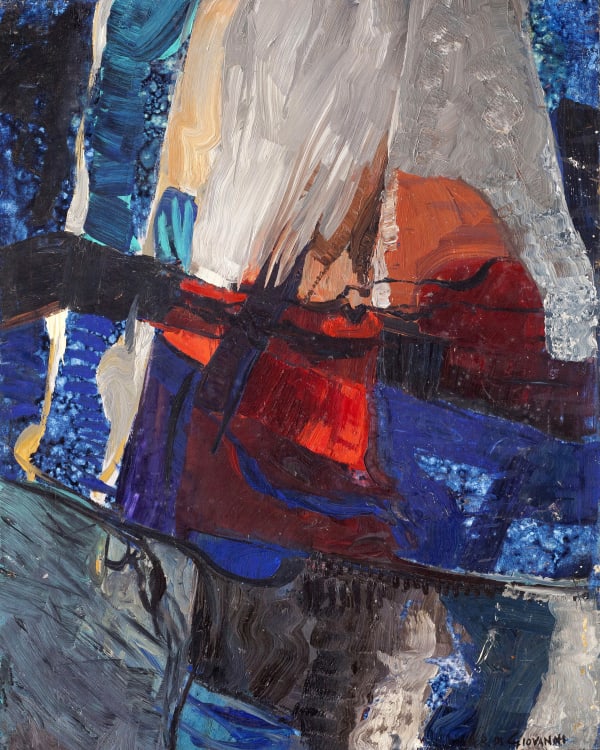Alfredo Bovio Di Giovanni Italian, 1907-1995
"Between the real and unreal... an explosion of the force of nature, wonderful, primitive, violent, purifying, often unexplainable; I feel the painting style of my grandfather Alfredo Bovio Di Giovanni, was precisely like this."
- Barbara Nazzaro
Alfredo Bovio Di Giovanni was one of the protagonists of twentieth-century Italian painting. In 1920 he moved with his family to Ercolano after spending his childhood first in Piedmont and then in Irpinia. From a very young age he began to travel around Europe, maintaining himself with the most disparate jobs to satisfy his growing desire to know and study the most important artistic currents of the time. In 1935, while he was in Spain, he experienced the drama of the civil war as a protagonist, taking part as a volunteer.
Returning to Italy with the outbreak of the Second World War, he soon left for Germany in the vain hope of finding his brother held in a concentration camp. In 1948 he returned definitively to Italy, to Milan, and in 1954 he finally settled in Portici in Naples, where he shared an attic used as an atelier with his friend Carlo Montarsolo. From 1954 to 1985 he devoted himself completely to painting with a fervent exhibition activity which he abruptly interrupted in 1985 due to the illness and consequent death two years later of his wife Ida. He continued to paint until the last day of his life.
In his adolescence, he revealed an inclination to analyze in depth those facets of artistic language he perceived as being in great turmoil. Aware that innovations occur rapidly and well beyond the narrow horizon he was familiar with, he was then motivated by the need to involve himself in the complex and vital world of the avant-gardeon the other side of the Alps. Thus, he began traveling around Europe.
His first stop was Paris in 1930, where he came in close touch with the tense atmosphere created by Dutch painter Vincent Van Gogh. Subsequently, he was attracted by the representatives of Symbolism, who were challenging the traditions of art at the close of the nineteenth century. Until the twentieth century, this current invaded the field of aesthetics with its new, confused, profoundly anti-impressionist, and more widely anti-naturalistic vision. It was painters like Edvard Munch (1863 - 1944) and Ferdinand Hodler (1853 -1918) who fascinated Di Giovanni the most. When it was his turn, Di Giovanni promptly reacted by radically modifying the style of his early paintings, still featuring a naturalistic descriptiveness, in order to acquire knowledge and pictorial means which were to prove crucial for his later work. In 1933, Di Giovanni moved to Monaco and took an interest in the work of the Cavaliere Azzurro (Blue Rider) group, the Italian form of the Der Blaue Reiter movement.
Created in Monaco in 1911 by Russian Vasilij Kandinskij and Franz Marc, who were joined by the best and most active contemporary artists, this vital movement was soon shaken by the onset of World War I, as early as 1914. Its innovations in terms of communicative means and techniques in all areas of expression, along with its theory of art as a transposition of man’s inner feelings, endured a widespread within the world of art even after the group dissolved. These changes had a strong influence on the forthcoming Bauhaus precisely because of their innovative power. The ideology behind the movement, which so many followed because it was free from conventions, accounts for why the language of the aesthetics of the Blaue Reiter survived among several of its followers, including Swiss Paul Klee, Max Ernst, Oskar Kokoschka, and American Jackson Pollock, the latter being best known as the creator of the dripping on the canvas technique in 1946. These artists all had a heavy influence Di Giovanni and influenced the conversion of his pictorial notions. Surrealism and abstractionism may therefore have been the source of inspiration or the starting point of a pictorial culture, European no doubt, that our artist was able to express with his works. Free-spirited and passionate, he left for Spain in 1935 and experienced the tragedy of the civil war as a protagonist, as he took part in it as a volunteer.
He returned to Italy after the outbreak of World War II, leaving soon afterward for Germany in the vain hope to find a missing brother who had been deported to a concentration camp. Back for a short while, he left for Paris again; there he met Magnelli, Severini, Borsi, and Campigli, with whom he made friends. Theirs was a true fellowship of Italian painters united by the need to see themselves, and to be seen, as part of the renewal that concerned European culture before World War II.
In 1936, driven by a sense of rebellion against the spread of ideologies he did not share, he went to Barcelona where he had the opportunity to enjoy the
paintings of Francisco Goya. The tragic sense of life and death that emanates from the Spanish master’s works impressed Di Giovanni who found in Goya’s paintings “... that manner of being, so peculiar to a Mediterranean artist imbued with the problems of the southern peoples”. Nevertheless, his high regard for Goya’s modes of expression did not lead him to blindly adopt stereotypical formulas of composition. A man of remarkable coherence, the Master reinterpreted the great artist in a kind of enrichment that did not limit itself to being iconographic. In those years he confirmed that his life of creativity was independent and void of incertitude. He was reluctant then, as he was until the end, to align himself with the mainstream movements or artistic trends, instead prone to re-elaborate in a thoroughly individual fashion the issues that could concern him the most. In 1948 he sojourned briefly in Milan and in 1954 he settled in Naples, where he only left for the several exhibitions he presented in Italy and abroad. From 1954 to 1985, followed by newspaper critics, he devoted himself entirely to paintingand to a busy exhibition activity in a number of Italian cities. Naples – the city where he resided, where he did not exhibit frequently – was constantly sparing of praise.
Di Giovanni was an untiring self-taught artist who never attended institutional painting courses, never took paintbrushes in his hand as a student in the ranks of the historic Academy of Fine Arts of Naples, and never followed the lines set out in some way by the academic world. Less than ever did he adapt to new trends, consistently working instead towards the evolution of a completely individual research of visual art. He discontinued his exhibitions a short time before the death of his wife Ida, but continued painting until January 7, 1995, the year of his death.
His final productions had all the marks characterized by a mature body of work. His expression became an art that was doubtlessly conceptual but was filtered through the maturation of Symbolism and then to Abstractionism. His art was expressed with a strong taste for color that imbued his paintings, both large and small, with a constant creative vitality that even his advancing years never managed to appease.


